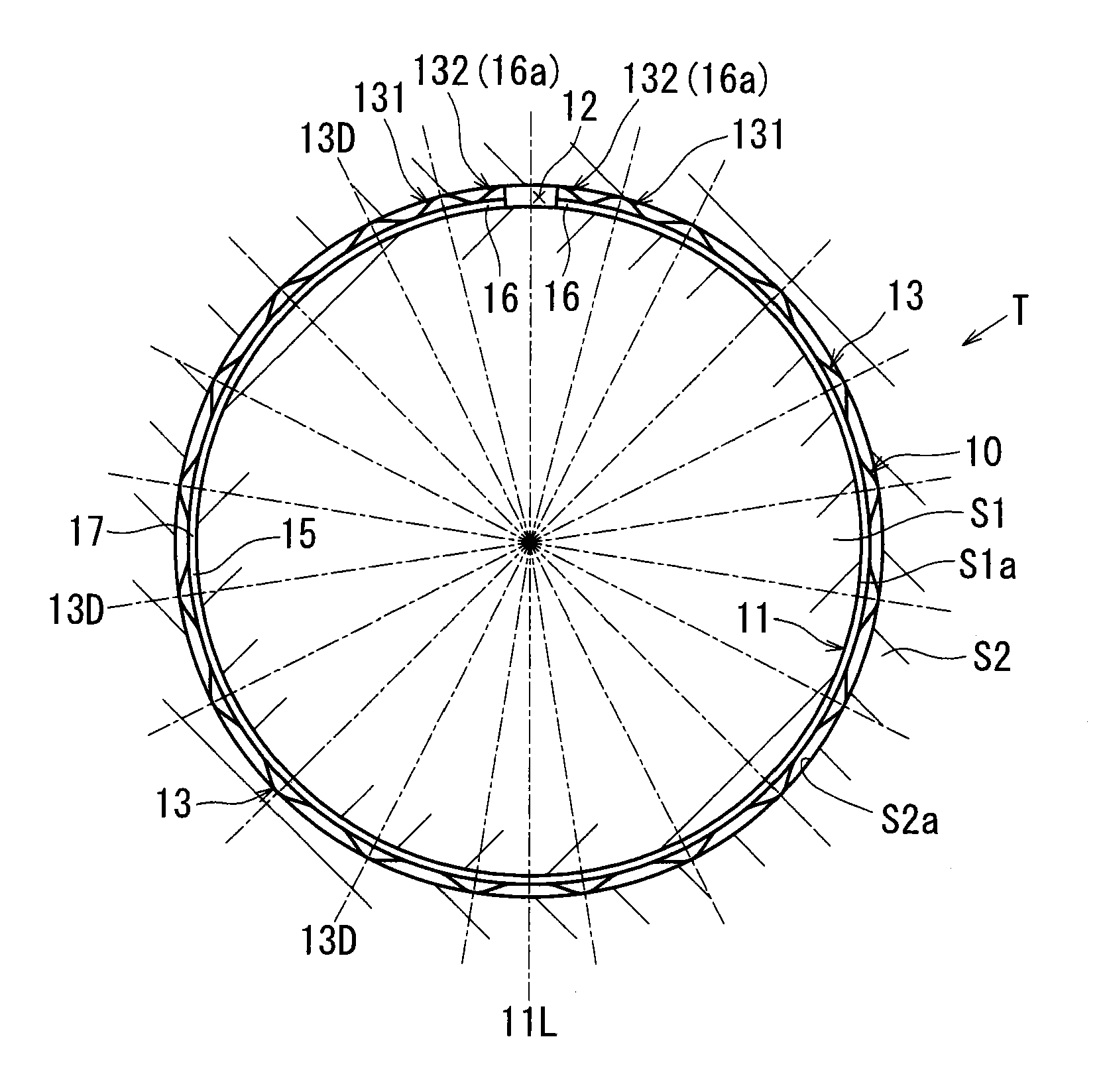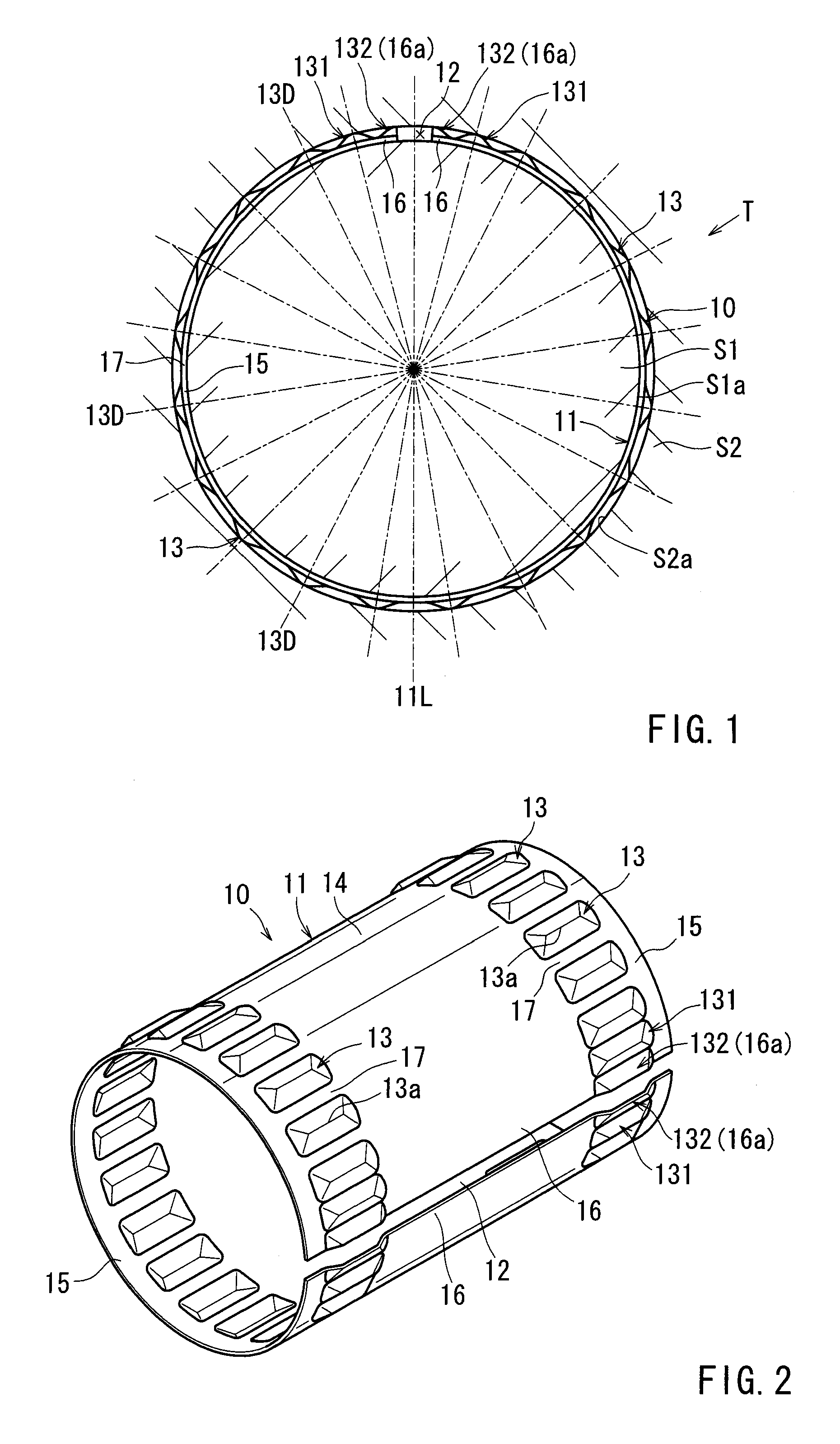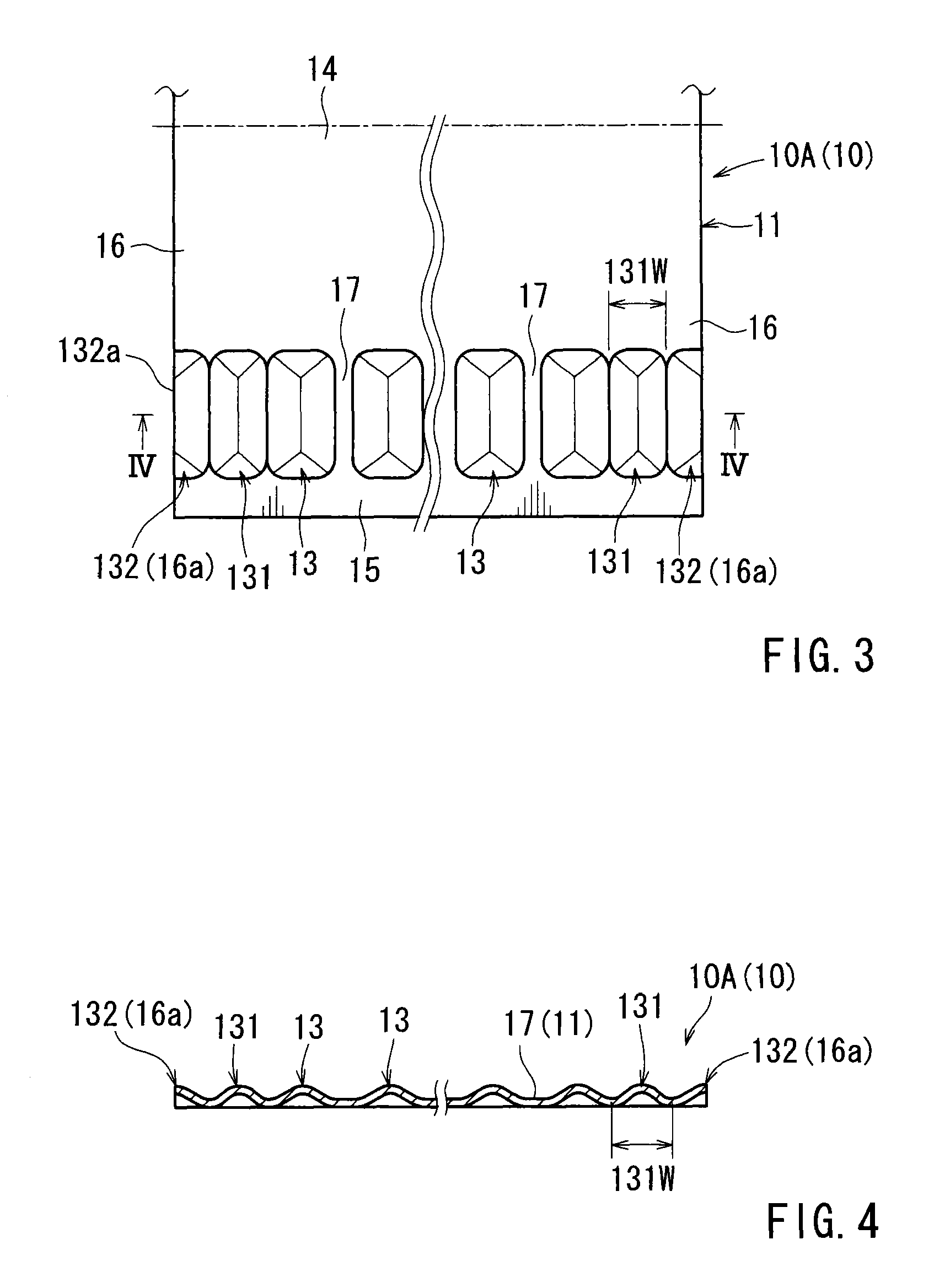Tolerance ring for torque transmission device
- Summary
- Abstract
- Description
- Claims
- Application Information
AI Technical Summary
Benefits of technology
Problems solved by technology
Method used
Image
Examples
first embodiment
[0044]A first embodiment will be described. FIG. 1 is a cross-sectional view showing a torque transmission device. FIG. 2 is a perspective view of the tolerance ring. FIG. 3 is a top view of the developed same tolerance ring. FIG. 4 is a cross-sectional view along line IV-IV in FIG. 3.
[0045]With respect to a tolerance ring 10 used for a torque transmission device of this embodiment, one and a half of reinforced protrusions 131 and 132 are formed at each edge area 16 of the ring body 11 symmetrically about the gap 12. The reinforced protrusion 131 has a narrower width 131W (see FIGS. 3 and 4) than the width 13W of the standard protrusions 13 (see FIGS. 29 and 30). Because of this configuration, rigidities of the reinforced protrusions 131 are higher than those of the standard protrusions 13. In addition, the reinforced protrusions 131 each have the same length 13L with the length 13L of the standard protrusions 13 (see FIGS. 29 and 31). Moreover, the reinforced protrusions 131 each h...
fourth embodiment
[0059]A fourth embodiment will be described. This embodiment corresponds to the conventional art with some changes. FIG. 7 is a cross-sectional view of the torque transmission device. FIG. 8 is a top view of the developed same tolerance ring 10. FIG. 9 is a cross-sectional view along line IX-IX in FIG. 8.
[0060]As shown in FIGS. 7-9, the tolerance ring 10 of this embodiment certain features are formed in a similar manner as the first embodiment (see FIGS. 1-4). At the pair of the edge areas 16 near the gap 12 of the ring body 11 of the conventional art (see FIGS. 28-30) the reinforced protrusions 131 and the edge reinforcing portions 132 are formed symmetrically about the gap 12. The number of the standard protrusions is reduced from twenty-eight in the conventional art (see FIG. 28) to twenty-five. The twenty-five standard protrusions 13 are arranged regularly and continuously in a circumferential direction in the same way as the conventional art (see FIGS. 29 and 30).
[0061]A fifth ...
sixth embodiment
[0063]A sixth embodiment will be described. This embodiment corresponds to the conventional art with some changes. FIG. 12 is a top view of the developed tolerance ring. FIG. 13 is a cross-sectional view along line XIII-XIII in FIG. 12.
[0064]As shown in FIGS. 12 and 13, in the tolerance ring 10 of this embodiment, the pair of the standard protrusions 13 close to the gap 12 of the conventional art (see FIGS. 26-31) are replaced with reinforced protrusions 133. The reinforced protrusions 133 each have length 133L longer than length 13L of the standard protrusions 13 (see FIGS. 29 and 31). Due to this configuration, rigidities of the reinforced protrusions 133 are increased compared to the rigidities of the standard protrusions 13. The reinforced protrusions 133 are formed to have the width 13W same with the width 13W of the standard protrusions 13 (see FIGS. 29 and 30). The reinforced protrusions 133 are formed to have the same height 13H as the height 13H of the standard protrusions ...
PUM
 Login to View More
Login to View More Abstract
Description
Claims
Application Information
 Login to View More
Login to View More - R&D
- Intellectual Property
- Life Sciences
- Materials
- Tech Scout
- Unparalleled Data Quality
- Higher Quality Content
- 60% Fewer Hallucinations
Browse by: Latest US Patents, China's latest patents, Technical Efficacy Thesaurus, Application Domain, Technology Topic, Popular Technical Reports.
© 2025 PatSnap. All rights reserved.Legal|Privacy policy|Modern Slavery Act Transparency Statement|Sitemap|About US| Contact US: help@patsnap.com



